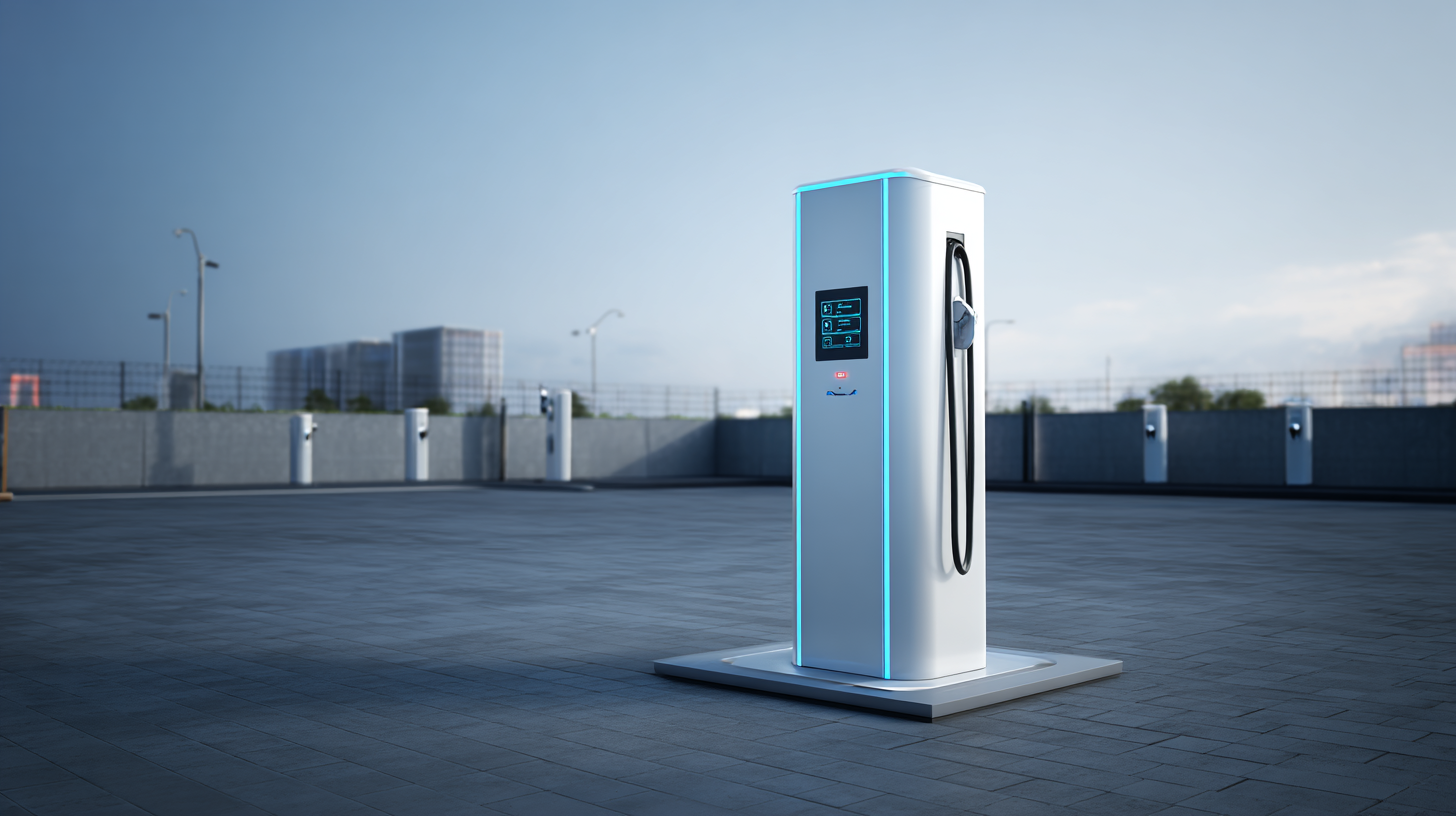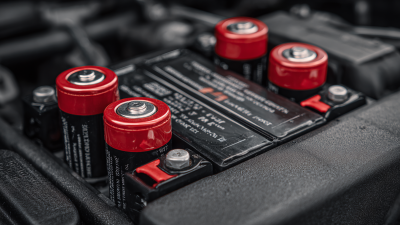Top 10 Battery Supply Trends Transforming the Energy Industry in 2023
In the rapidly evolving energy sector, the battery supply landscape is undergoing significant transformations that promise to reshape how we harness and utilize energy. As we delve into the top trends defining battery supply in 2023, experts highlight the critical role that innovation and sustainability play in this sector. According to Dr. Emily Chen, a leading authority on energy storage solutions, "The future of our energy systems will heavily rely on advancements in battery supply, unlocking new possibilities for cleaner and more efficient power."
This introduction to the current trends captures the essence of the shifting paradigms in battery supply, reflecting technological breakthroughs, policy changes, and market dynamics. As we explore the implications of these trends, it becomes evident that the advancements in battery technology not only enhance energy storage capabilities but also drive the transition towards renewable energy sources. With insights from industry experts like Dr. Chen, we can better understand the transformational impact that these battery supply trends will have on the broader energy industry, encouraging a more sustainable and resilient future.

Advancements in Lithium-Ion Technology Driving Cost Reductions and Efficiency Gains in 2023
The energy industry is witnessing remarkable transformations in 2023, primarily driven by advancements in lithium-ion technology. As researchers and manufacturers push the boundaries of battery efficiency, significant cost reductions are becoming evident. These advancements focus on enhancing energy density, which allows batteries to store more power in a smaller footprint. This is crucial for various applications, from electric vehicles to renewable energy storage systems, making them more viable for widespread adoption.
Moreover, innovations in materials and manufacturing processes are contributing to the overall efficiency gains in lithium-ion batteries. For instance, the integration of silicon anodes is proving to be a game changer, significantly increasing charge capacity while reducing weight. With these technological developments, manufacturers are not only improving battery lifespan but also lowering production costs, which ultimately benefits consumers and industries alike. In 2023, these trends symbolize a pivotal shift toward more sustainable and economically feasible energy solutions, reshaping the outlook of the energy sector fundamentally.
Emergence of Solid-State Batteries: The Future of Energy Storage Solutions
The emergence of solid-state batteries (SSBs) is transforming the energy storage landscape by offering significant advantages over traditional lithium-ion batteries. One of the most critical benefits is enhanced safety. SSBs utilize solid electrolytes, eliminating flammable liquid components and reducing the risk of fires and explosions. This advancement not only protects consumers but also increases the reliability of energy systems across various applications, from electric vehicles (EVs) to large-scale renewable energy storage.
Tips: When considering energy storage solutions, prioritize safety and longevity. Solid-state batteries provide both, ensuring that your investments are secure. Additionally, keep an eye on the evolving technology landscape to grasp how innovations like silicon-based batteries could further enhance range and efficiency in transportation.
Innovations in SSB technology are also elevating energy density, allowing for more compact and powerful solutions. As a result, EVs could soon achieve ranges exceeding 3,000 miles on a single charge, drastically changing consumer perceptions of electric vehicles. This leap not only feeds into the push for greener technologies but also supports a more resilient energy grid capable of harnessing the full potential of renewable sources.

Rising Demand for EVs: Impact on Battery Supply Chains and Manufacturing Capacities
The demand for electric vehicles (EVs) is driving significant changes in battery supply chains and manufacturing capacities. As the global automotive powertrain market is projected to reach $252.16 billion in 2024, the rising adoption of EVs is expected to cause a ripple effect across various segments of the battery industry. The advanced technologies being developed, such as next-generation lithium-metal batteries, highlight the industry's push towards enhancing performance, energy density, and sustainability.
Moreover, the EV battery housing market is anticipated to grow from $15.15 billion in 2024 to $32.25 billion by 2032, indicating a compound annual growth rate of 9.9%. This growth reflects the increasing need for efficient battery management systems as the market adapts to accommodate rising production volumes.
Additionally, the solid-state battery sector is expected to expand significantly, further transforming battery supply trends. As manufacturers collaborate to innovate and scale production, the overall landscape of the energy industry is on the brink of a revolution, driven predominantly by the surge in EV demand.
Integration of Renewable Energy Sources with Battery Storage Technologies
The integration of renewable energy sources with battery storage technologies is emerging as a transformative trend in the energy industry in 2023. As global efforts shift toward cleaner and more sustainable energy alternatives, the battery energy storage systems (BESS) market is witnessing unprecedented growth. With the utility and industrial sectors focusing on grid stability and improving energy reliability, the BESS market is set to expand significantly, projected to reach $14.69952 billion by 2024 and grow at a compound annual growth rate (CAGR) of 15.2% through 2032.
As the demand for renewable energy increases, virtual power plants (VPPs) are gaining traction, particularly in the U.S., with forecasts indicating a market size of $815.1 million by 2024 and a remarkable CAGR of 19.04% during the forecast period. This shift highlights the importance of integrating energy production and storage, allowing for a more resilient energy grid that can accommodate fluctuating supply levels from renewable sources.
Tips: To maximize the benefits of integrating battery storage with renewable energy, consider implementing energy management systems that optimize usage patterns. Additionally, staying informed about the latest developments in battery technologies will help in making informed investment decisions as the market evolves. As the renewable energy landscape continues to grow, companies and homeowners alike can leverage innovative storage solutions to enhance energy efficiency and sustainability.
Global Policy Shifts and Their Influence on Battery Recycling and Sustainability Practices
The global energy landscape in 2023 is undergoing significant transformations, especially concerning battery recycling and sustainability practices driven by shifting policies. According to a report by the International Energy Agency (IEA), global battery demand is projected to surge by over 70% by 2030, prompting governments to implement stricter regulations on battery production and recycling to minimize environmental impact. Enhanced policies are not only focusing on the lifecycle of batteries but also on promoting the circular economy, which aims to reuse and recycle battery materials. For instance, the European Union's Battery Directive revision enforces stringent targets for recycling, with an aim to achieve 70% of lithium-ion battery materials being reclaimed.
Moreover, major economies are investing in innovative recycling technologies to recover valuable materials from used batteries. A study by BloombergNEF indicates that advancements in recycling technologies could increase recovery efficiencies by up to 80%. These developments align with global sustainability goals and the urgent need to address resource scarcity. As policies evolve, they are fostering collaborative efforts among manufacturers, recyclers, and policymakers to enhance battery lifecycles while ensuring environmental stewardship. This shift not only mitigates the environmental burden but also stimulates economic growth within the green technology sector.

Related Posts
-

How an UPS Backup System Can Save Your Data During Power Outages: Essential Insights
-

Understanding Battery Power Efficiency Trends and Their Impact on Sustainable Energy Solutions
-

Exploring the Future of Energy: Innovative New Battery Technologies Revolutionizing Power Sources
-

How to Extend the Lifespan of Your Car Batteries: Essential Tips and Tricks
-

Essential Guide to Choosing the Right UPS Backup System for Your Home Office
-

7 Essential Facts About the Best UPS Backup System for Your Business Needs
